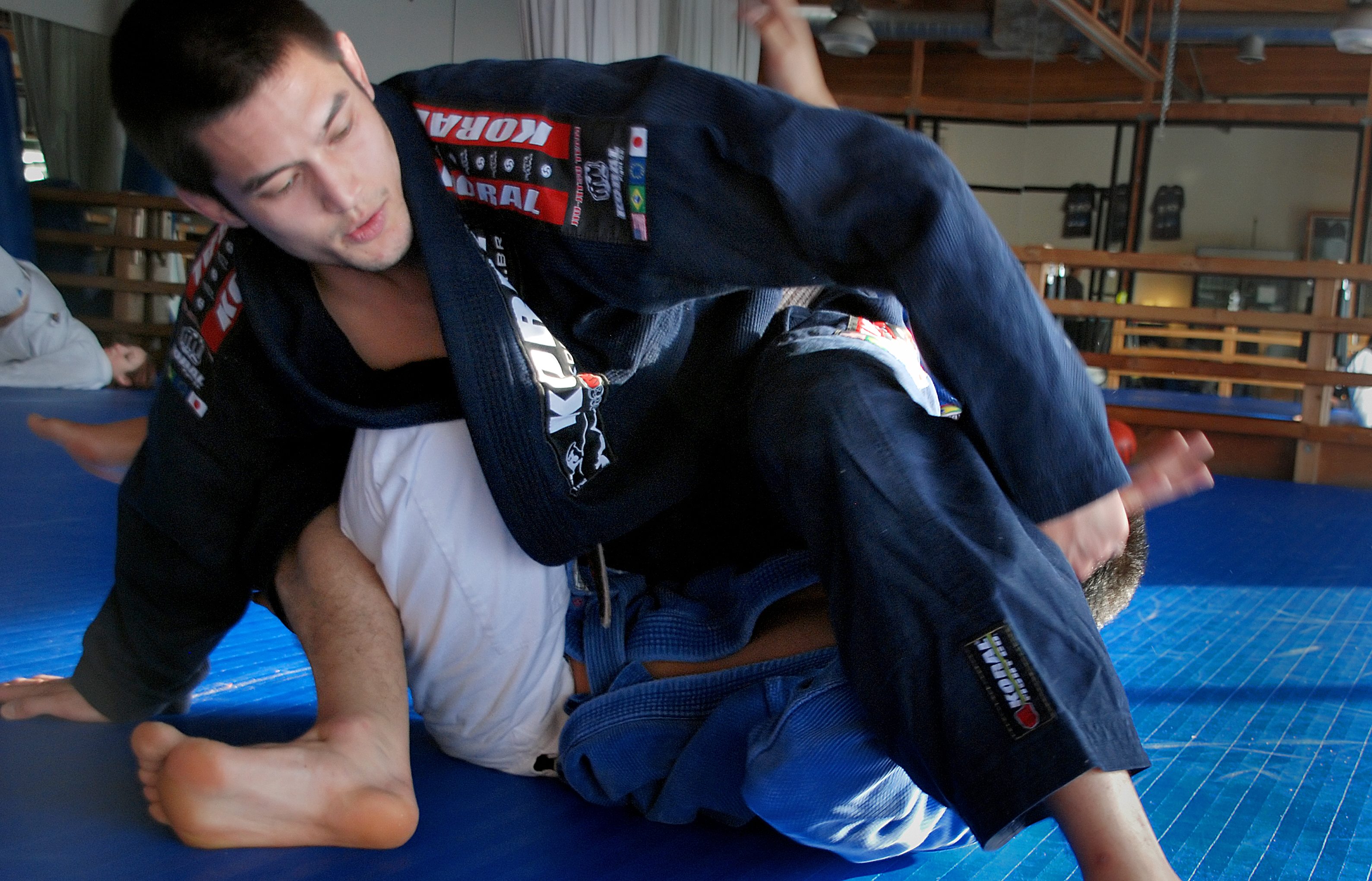To a casual observer, watching a Brazilian jiu-jitsu match might just look like two people wrestling on the floor. But to the experienced eye, the two fighters are working to submit each other using various tactics honed through many hours of training.
In a large city like Los Angeles, there are a number of clubs that teach this fighting style. But the Robot Brazilian Jiu-Jitsu Academy, started by two Bruins and still run by a family of UCLA students and alumni, prides itself on a traditional style of training.
Tim Peterson has had a passion for martial arts since he was only 4 years old. When he was 15, he began to focus solely on Brazilian jiu-jitsu.
As a second-year at UCLA, he became the head instructor for the jiu-jitsu classes at the Wooden Center. The classes became so popular that they were filled to maximum capacity. Additional classes had to be added to the schedule so that more students could enroll.
Now a brown belt in the sport training under jiu-jitsu celebrity Wander Braga, he hopes to pass down his knowledge to his students and mold tough jiu-jitsu fighters.
UCLA Law School graduate David Telfer began practicing jiu-jitsu at the age of 23. While he was studying abroad in Brazil as an undergraduate, he took advantage of the chance to learn a martial art he knew nothing about. His high school did not have a wrestling program, so Brazilian jiu-jitsu was his opportunity to learn something similar. Telfer became a blue belt under Peterson and Wander Braga as well.
Their interest for opening Robot Brazilian jiu-jitsu came up when they realized that they wanted to dedicate as much time as they could to the sport. Since they did not enjoy the other clubs in the Los Angeles area, they thought it would be best to start their own.
“I felt that many of the clubs were mostly geared towards methods that had a brute mentality,” Telfer said. “UCLA was where Tim and I discovered some good fighters that were more geared towards the intellectual side of the sport.”
While Telfer was training under Peterson, he realized that he had a gift for teaching and for breaking down the methods of jiu-jitsu in a way that would make tough fighters of students. Telfer added that Peterson has taught a number of students who showed impressive transformations in their jiu-jitsu.
“You can see proof of how good a teacher Tim is,” Telfer said. “I’ve seen kids train under him who have come from nothing and three years later they were out beating purple belts.”
Once the two decided to open the academy, they hired some of the students who trained with them at the Wooden Center to teach classes at the academy. All of the instructors are either UCLA graduates or are still attending the university.
Although jiu-jitsu is an extremely physical sport, youth instructor and UCLA student Sam Chen makes sure that the kids he teaches learn valuable life lessons.
“Besides teaching them a way of self-defense, I want them to have self-confidence,” Chen said. “It’s important for these kids to learn how to interact with people, and I feel that martial arts makes you a nice person, it doesn’t necessarily make you just a combatant.”
What made Peterson’s experience unique was his instructor Wander Braga, who he described as intense and tough.
“Generally in the jiu-jitsu world, the better a guy is, the nicer they are,” Peterson said. “Wander Braga is an intense guy and when you meet him he’s very relaxed. Once you train with him, you know you’re not there to make friends. You’re there to fight.”
Peterson said that what made Braga so unique was that he trained in Brazil where opponents often threw punches and kicks in their matches. Braga used this method to teach Peterson, as well as Telfer, a more physical way of learning jiu-jitsu.
The instructors welcome all UCLA students who wish to learn jiu-jitsu.
“Every new sign-up is exciting,” Telfer said. “We’ve had people come in from other gyms who have completely changed their game. I truly believe in what we offer and the feedback has been great.”
